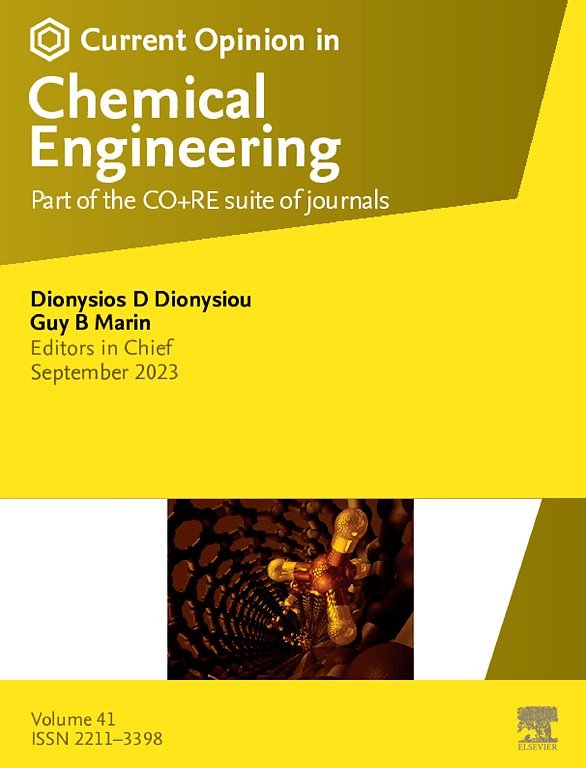定制膜:需要和机会超越传统的界面聚合脱盐膜
IF 6.8
2区 工程技术
Q1 BIOTECHNOLOGY & APPLIED MICROBIOLOGY
引用次数: 0
摘要
近几十年来,反渗透(RO)构成了海水淡化装机容量的大部分。商用膜具有优良的选择性和合理的生产效率。然而,由于使用界面聚合作为制造手段,这些膜存在一些弱点。传统膜制造的一些缺点是无法控制厚度,难以适应新的化学物质,以及避免表面粗糙度增加污染倾向。近几十年来,许多材料被提出作为聚酰胺RO的替代品。然而,尽管有许多关于这些新材料的出版物,但值得注意的是,在商业环境中,没有任何一种材料能够成功取代传统的反渗透膜材料。这在很大程度上是因为许多新材料与现有的膜制造方法(如界面聚合)不相容。我们必须能够将新材料加工成薄的、无缺陷的薄膜。这是当今膜采用新材料的一个重大障碍。需要新的制造方法来解决聚酰胺界面聚合的固有弱点,以及将新发现的材料加工成用于反渗透和纳滤平台的薄膜复合膜。本文章由计算机程序翻译,如有差异,请以英文原文为准。
Customized membranes: needs and opportunities for moving beyond conventional interfacial polymerization for desalination membranes
Reverse osmosis (RO) has constituted most of the installed desalination capacity in recent decades. Commercial membranes offer excellent selectivity and reasonable productivity. These membranes, however, suffer from several weaknesses that stem from the use of interfacial polymerization as a means of manufacturing. The inability to control thickness, adjust easily to new chemistries, and avoid surface roughness that enhances foulilng propensity are a few of the weaknesses to conventional membrane fabrication. Numerous materials have been proposed as alternatives to polyamide for RO in recent decades. However, in spite of numerous publications on these new materials, it is remarkable to see how none has even come close to succeeding in replacing conventional RO membrane materials in a commercial setting. This is largely because many of these new materials are incompatible with existing membrane manufacturing approaches such as interfacial polymerization. We must be able to process new materials into thin, defect-free films on conventional supports. This is a significant hurdle for new material adoption in membranes today. New manufacturing methods are needed to address the inherent weaknesses of interfacial polymerization for polyamide and the general processing of newly discovered materials into thin film composite membranes for RO and nanofiltration platforms.
求助全文
通过发布文献求助,成功后即可免费获取论文全文。
去求助
来源期刊

Current Opinion in Chemical Engineering
BIOTECHNOLOGY & APPLIED MICROBIOLOGYENGINE-ENGINEERING, CHEMICAL
CiteScore
12.80
自引率
3.00%
发文量
114
期刊介绍:
Current Opinion in Chemical Engineering is devoted to bringing forth short and focused review articles written by experts on current advances in different areas of chemical engineering. Only invited review articles will be published.
The goals of each review article in Current Opinion in Chemical Engineering are:
1. To acquaint the reader/researcher with the most important recent papers in the given topic.
2. To provide the reader with the views/opinions of the expert in each topic.
The reviews are short (about 2500 words or 5-10 printed pages with figures) and serve as an invaluable source of information for researchers, teachers, professionals and students. The reviews also aim to stimulate exchange of ideas among experts.
Themed sections:
Each review will focus on particular aspects of one of the following themed sections of chemical engineering:
1. Nanotechnology
2. Energy and environmental engineering
3. Biotechnology and bioprocess engineering
4. Biological engineering (covering tissue engineering, regenerative medicine, drug delivery)
5. Separation engineering (covering membrane technologies, adsorbents, desalination, distillation etc.)
6. Materials engineering (covering biomaterials, inorganic especially ceramic materials, nanostructured materials).
7. Process systems engineering
8. Reaction engineering and catalysis.
 求助内容:
求助内容: 应助结果提醒方式:
应助结果提醒方式:


